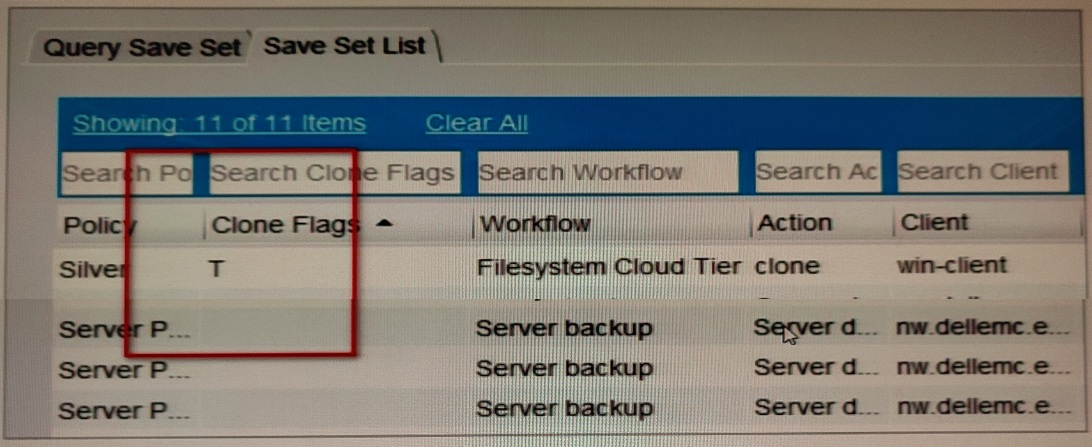Dell EMC Specialist - Implementation Engineer, NetWorker DES-3128 Exam Practice Test
A backup administrator is deploying an extended client on a Linux host. The following error is observed during the installation:
Cannot contact a portmapper on port 7937
What is the recommended action to resolve this issue?
Answer : B
The error 'Cannot contact a portmapper on port 7937' indicates that the portmapper service, which is required for the NetWorker Extended Client installation, is not running on the Linux host. The recommended action to resolve this issue is to install the lgtoserv-[version] rpm package and reinstall the Extended client. The other options are not related to this process.
Refer to the exhibit.

An administrator asks about the clone flag on the Cloud. What does the T flag represent?
Answer : B
The T flag on the Cloud in Dell EMC NetWorker represents that the save set will be cloned to a tape device. This allows for the save set to be stored on the tape device in addition to the cloud storage, providing additional backup and redundancy.
Which event category indicates that a nonfatal error has occurred?
Answer : A
A Warning event category indicates that a nonfatal error has occurred. The other options are not related to this process.
What is the minimum number of served licenses required for a customer with 5 datazones and 2 additional storage nodes per datazone?
Answer : C
The minimum number of served licenses required for a customer with 5 datazones and 2 additional storage nodes per datazone is 7. This is because each datazone requires a minimum of 1 served license, and each additional storage node requires an additional served license. The other options are not related to this process.
By default, which NetWorker server policy and workflow back up the CFI?
Answer : B
By default, the Server Protection policy and Server backup workflow are used to back up the CFI (Client File Index) on the NetWorker server.
Which command can be used to query the NetWorker media database and to export the fields as comma separated fields?
Answer : A
The mminfo command can be used to query the NetWorker media database and to export the fields as comma separated fields. The -avot flag will list all volumes and export the fields as a comma separated list.
A NetWorker server is utilizing a remote storage node. There is a PowerProtect DD appliance with two VTLs configured, and it is attached to the storage node via Fiber Channel. There is also a physical media library attached to the same storage node.
How many nsrlcpd processes are running on the storage node?
Answer : C
When a NetWorker server is utilizing a remote storage node, two nsrlcpd processes will be running on the storage node. The first one is responsible for communication between the NetWorker server and the storage node, while the second one is used to communicate with the PowerProtect DD appliance and the physical media library.